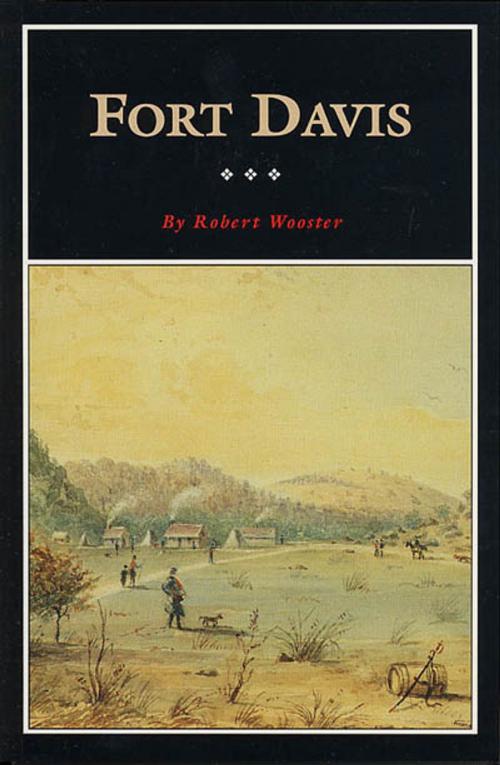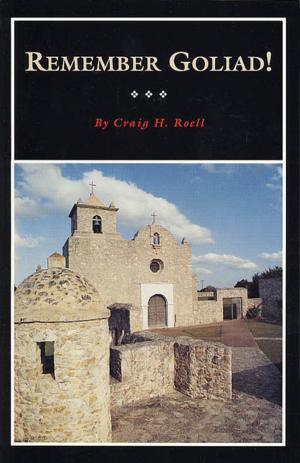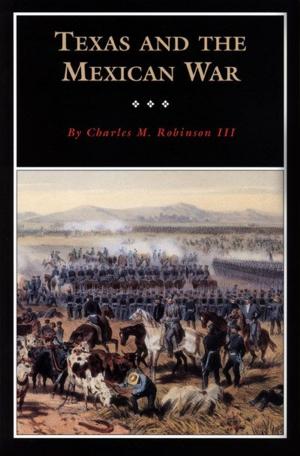| Author: | Robert Wooster | ISBN: | 9781625110084 |
| Publisher: | Texas State Historical Assn Press | Publication: | January 30, 2014 |
| Imprint: | Texas State Historical Assn | Language: | English |
| Author: | Robert Wooster |
| ISBN: | 9781625110084 |
| Publisher: | Texas State Historical Assn Press |
| Publication: | January 30, 2014 |
| Imprint: | Texas State Historical Assn |
| Language: | English |
This engaging, illustrated history of Fort Davis, one of the U.S. Army's most important western posts, relates the exciting history of Trans-Pecos Texas—the far western reaches off the state. Wooster traces the history of this Davis Mountains region from the days when Indians and later Spaniards and Mexicans inhabited the area, through its days as the site of Texan and American interests. The establishment and construction of Fort Davis in the mid-1850s tells the story of one of the army's largest western posts. We learn about the famous army camels which Secretary of War Jefferson Davis brought to the area, with Fort Davis serving as a base of operations, and about the difficult conditions imposed on the army by weather, climate, and Indians, Evacuated by the U.S. Army at the beginning of the Civil War, Fort Davis later was occupied by Texas state troops, then briefly reoccupied by the Federals. After the war, the War Department began shifting regular army units back to the western frontiers. Among these units were each of the famous black regiments, many of them composed of former slaves who proved to be excellent soldiers. The details of daily life—food, clothing, social activities, weapons, medical care—are thoroughly discussed, as are the often ineffective campaigns against Indians.
Robert Wooster skillfully uses the forty-year history of Fort Davis to provide a clear window into the frontier military experience and into nineteenth-century American society. Because of its black soldiers, and its large Mexican-American civilian community, Fort Davis is a prime resource for studying and understanding the stratified racial relations which accompanied the army's and the nation's westward expansion.
This engaging, illustrated history of Fort Davis, one of the U.S. Army's most important western posts, relates the exciting history of Trans-Pecos Texas—the far western reaches off the state. Wooster traces the history of this Davis Mountains region from the days when Indians and later Spaniards and Mexicans inhabited the area, through its days as the site of Texan and American interests. The establishment and construction of Fort Davis in the mid-1850s tells the story of one of the army's largest western posts. We learn about the famous army camels which Secretary of War Jefferson Davis brought to the area, with Fort Davis serving as a base of operations, and about the difficult conditions imposed on the army by weather, climate, and Indians, Evacuated by the U.S. Army at the beginning of the Civil War, Fort Davis later was occupied by Texas state troops, then briefly reoccupied by the Federals. After the war, the War Department began shifting regular army units back to the western frontiers. Among these units were each of the famous black regiments, many of them composed of former slaves who proved to be excellent soldiers. The details of daily life—food, clothing, social activities, weapons, medical care—are thoroughly discussed, as are the often ineffective campaigns against Indians.
Robert Wooster skillfully uses the forty-year history of Fort Davis to provide a clear window into the frontier military experience and into nineteenth-century American society. Because of its black soldiers, and its large Mexican-American civilian community, Fort Davis is a prime resource for studying and understanding the stratified racial relations which accompanied the army's and the nation's westward expansion.















